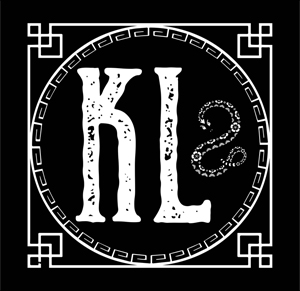

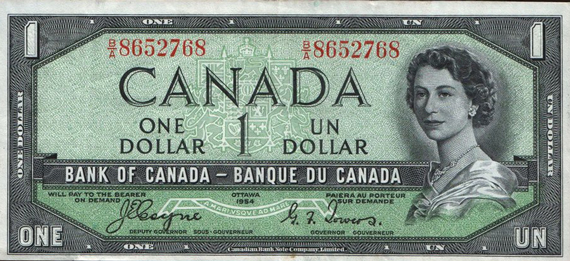
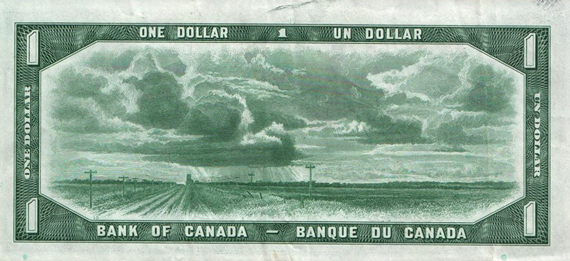
1 Dollar Banknote
Canada (1954)
This series caused controversy because highlighted areas of the Queen’s hair gave the illusion of a grinning demon behind the ear. The Bank of Canada had both bank note companies modify the face plates by darkening the highlights in the hair. These modifications were made in 1956 for all denominations.
Initially printed by CBN and later by BABN as well, the face of the $1 note features an engraving of Queen Elizabeth II based on a Karsh portrait that appears on all denominations in the series. The portrait was moved to the right to eliminate wear from folding. It was felt that the change from a decorative frame to a soft vignette would make counterfeiting more difficult. The Saskatchewan prairie scene on the back was engraved by Carl Louis Irmscher of ABN.

Canadian 2 Dollars (1954)
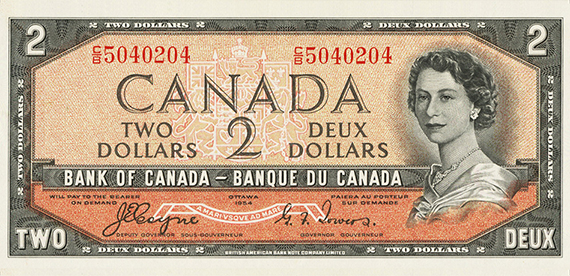

2 Dollars Banknote
Canada (1954)
The third series of Bank of Canada bank notes was prepared in 1952. Significant changes to the design of Canada’s paper currency gave it a whole new look that set the standard for the future.
The $2 note was printed by BABN. The back of the note, which features a view of the Saint-François River from Upper Melbourne, Richmond, Quebec, was engraved by BABN’s Harry Dawson. Note that the same border design is used on the front and back of the notes in this series.

Canadian 5 Dollars (1954)
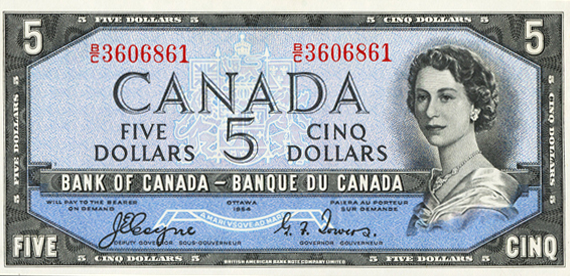
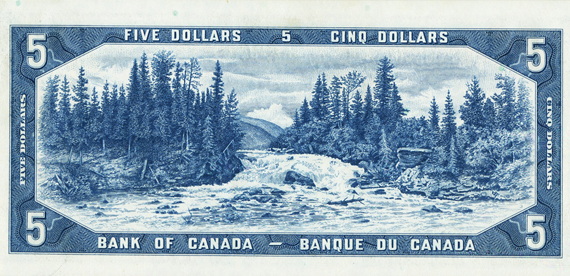
5 Dollars Banknote
Canada (1954)
With the ascension to the throne of Queen Elizabeth II in 1952, plates were prepared for the third series of Bank of Canada notes. They were very different from the 1937 series, although the colours and bilingual nature were retained. The portrait was moved from the centre of the bank note to the right-hand side where it was less susceptible to wear caused by the folding of notes. Until 1959, the $5 bank note was printed exclusively by BABN. The back of the note was engraved by C. Gordon Yorke of BABN and depicts Otter Falls on the Aishihik River, Mile 996 Alaska Highway, in southwestern Yukon.

Canadian 1 Dollar (1973)

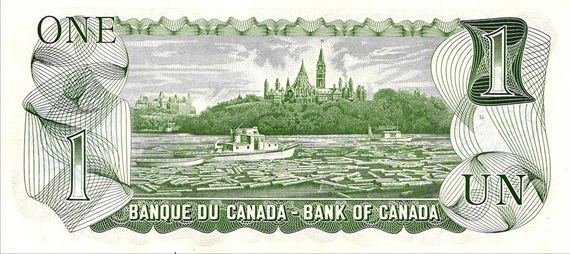
1 Dollar Banknote
Canada (1973)
The $1 note was issued in June 1974 and printed by both CBN and BABN. The back features a tugboat in the middle of a broken log boom on the Ottawa River below Parliament Hill. The vignette was based on a 1963 photograph by Malak and was engraved by C. Gordon Yorke. The tugboat, the Missinaibi hauled logs up the river for almost twenty years.

Canadian 50 Dollars (1975)

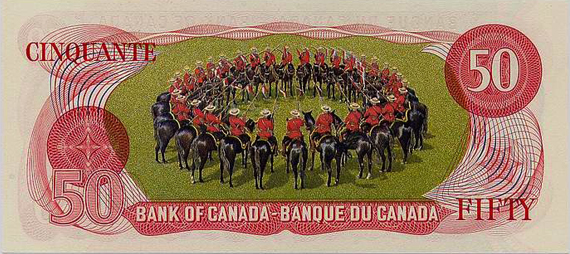
50 Dollars Banknote
Canada (1975)
The face of the $50 note features an engraving of William Lyon Mackenzie King by George Gunderson based on a Karsh portrait of Canada’s longest-serving prime minister. The dome formation from the RCMP musical ride appears on the back of the note. This is the only denomination in the series where the vignette on the back was produced by a lithographic rather than an intaglio process. The note was issued in March 1975 and printed by CBN.

Canadian 100 Dollars (1975)
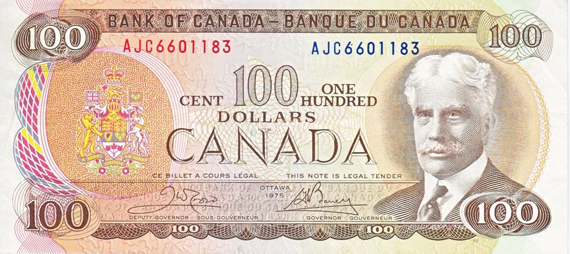
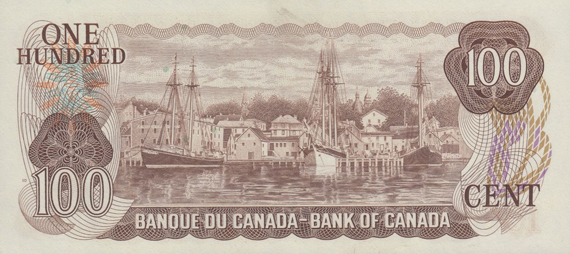
100 Dollars Banknote
Canada (1975)
C. Gordon Yorke engraved the portrait of Prime Minister Sir Robert Borden that appears on the front of the $100 note, as well as the vignette of the harbour at Lunenburg, Nova Scotia, featured on the back. The engraving was based on a photo by G. Hedley Doty, a photographer with the Nova Scotia Information Service. Issued in May 1976, the note was printed by BABN.
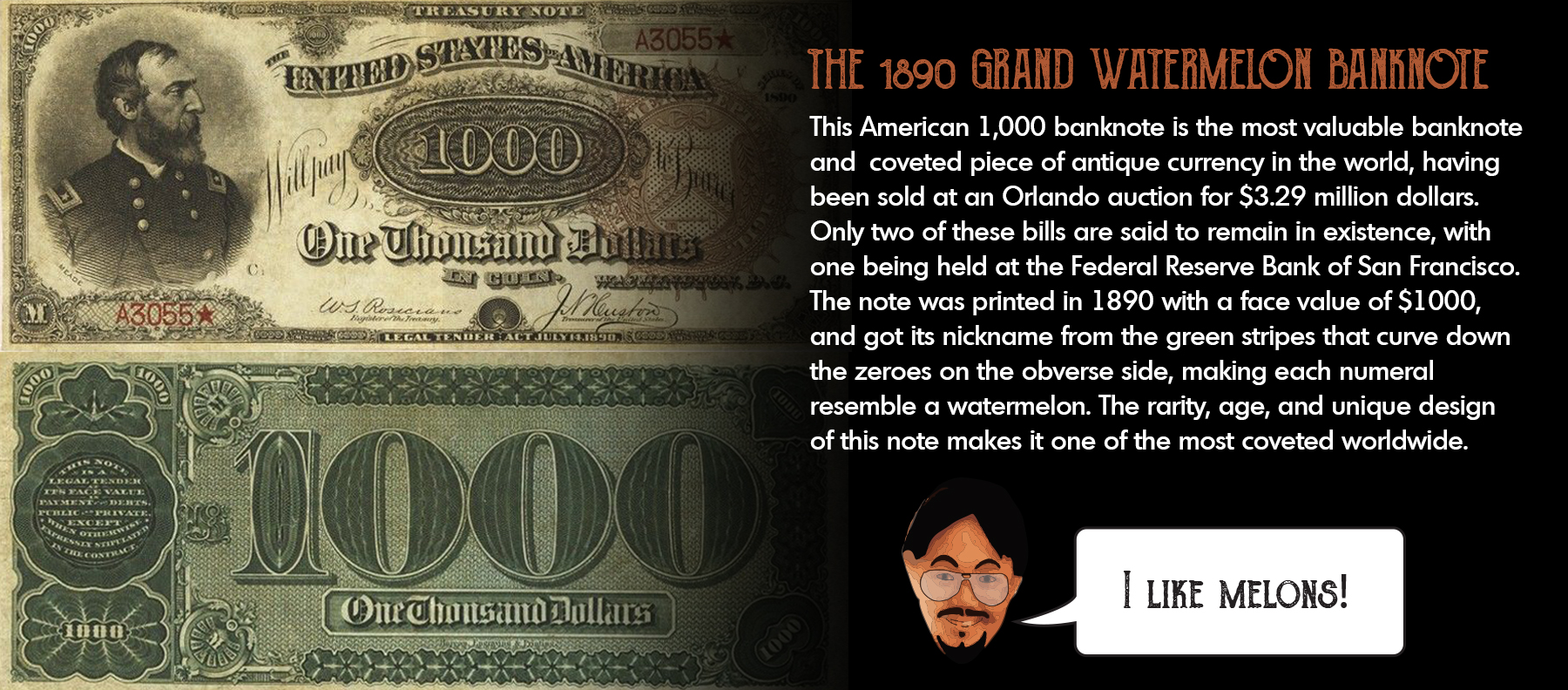

Canadian 5 Dollars (1935)
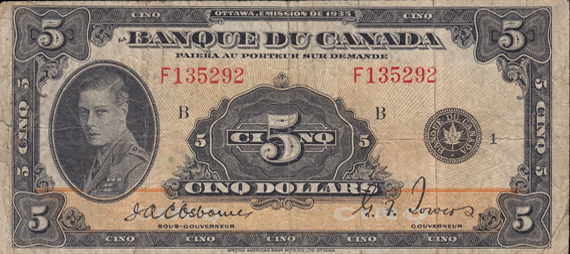
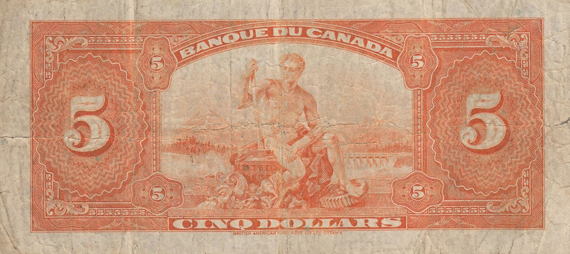
5 Dollars Banknote
Canada (1935)
FRENCH VERSION
In 1969, the release of a completely new and modern series of Canadian notes began. The Bank of Canada, because of the increased circulation of counterfeit notes of the 1954 series, was concerned with producting notes that would be virtually impossible to counterfeit. The most advanced security features available were incorporated into the new designs while maintaining a high artistic standard. The updated style of this series includes multicoloured printing with deeper engravings to give the notes more of a ‘feel’.

Canadian 25 Dollars (1935)
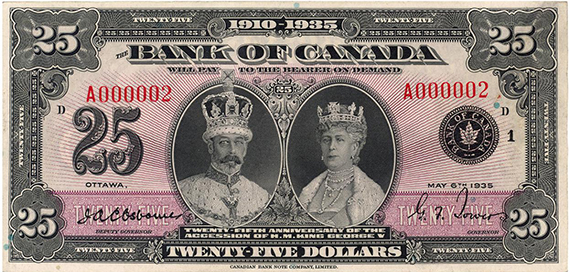
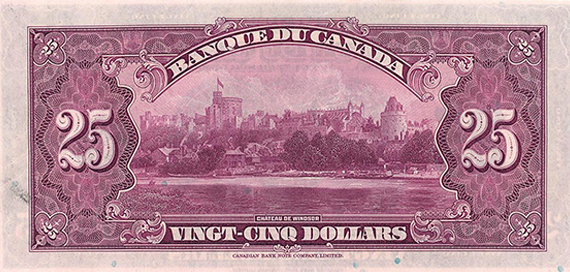
25 Dollars Banknote
Canada (1935)
This special royal purple $25 note was issued on 6 May 1935 to commemorate the silver jubilee of King George V. It was printed by CBN and features portraits of the King and Queen, engraved by Edwin Gunn and Will Ford of ABN. Louis Delmoce, also of ABN, engraved the image of Windsor Castle, one of the royal family’s official residences, that appears on the back of the note. This was the only $25 note ever issued by the Bank of Canada.

Canadian 1000 Dollars (1988)
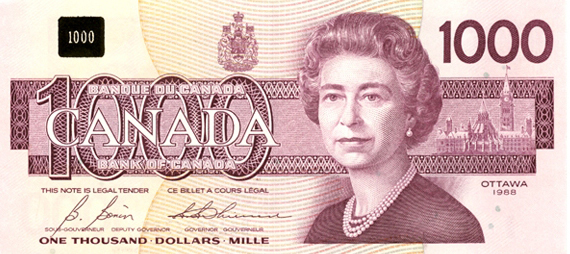

1000 Dollars Banknote
Canada (1988)
Issued in May 1992, the $1,000 note was originally going to feature the spruce grouse on the back. In the end, however, this was considered too controversial because of the bird’s nickname fool hen, which derives from its habit of remaining motionless to avoid predators rather than fleeing. It was replaced by the pine grosbeak.
The note’s face features the Queen’s portrait. On her left is a view of the Parliament Buildings, showing the north side of the Centre Block with the Library of Parliament in the foreground. The Maple Leaf flag flies above the Peace Tower. The note was printed by CBN.

Germany 100 Mark (1908)

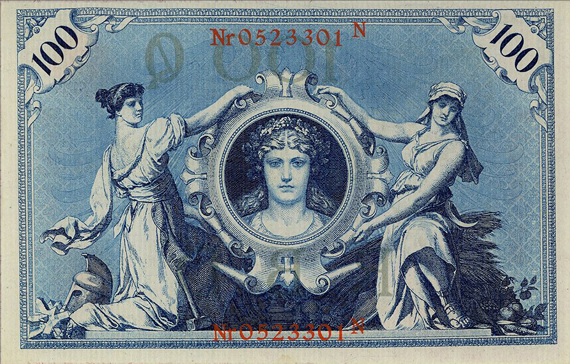
100 Mark Banknote
Germany (1908)
The Germany 100 Mark Banknote comes from the 1883-1922 Imperial series that circulated for 40 years until shortly after the first World War. This black and blue shaded banknote measures 160 x 105 mm and has no security thread. The obverse side features the Imperial crown and eagle along with two red Reichsbank seals. Meanwhile, the reverse side bears the image of two kneeling allegorical women holding a medallion with the head of an allegorical woman, with a mace, helmet, hammer and wheat at their feet.

Serbia 100 Dinara (1941)
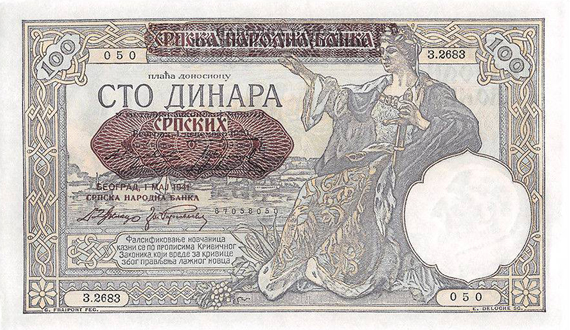

100 Dinara Banknote
Serbia (1941)
The Serbia 100 Dinara Banknote is part of the family of notes issued in 1941 to replace the Yugoslav dinar. This 170 x 100 paper money is part of the Nazi occupation overprint and is in uncirculated condition. On its obverse is the national personification Serbia wearing a robe, seated while holding a sword and produce at her feet. It also shows a sailboat along the coast of Belgrade. The back of the Serbia 100 Dinara note displays fruit trees, sailboats, and a man in national costume holding fruit and a shield that has the countrys Coat of Arms. Signed by D.Uzelac and M.Radosaviljevic, this bill has King Alexander Is portrait as its watermark.

Germany 50 Reichsmark (1938)
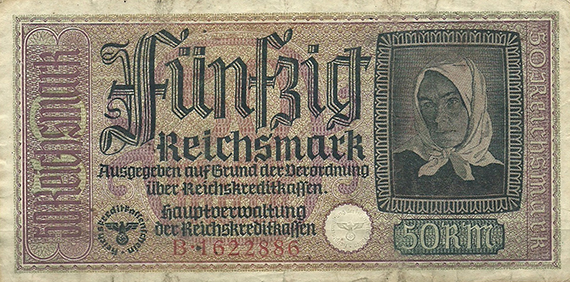
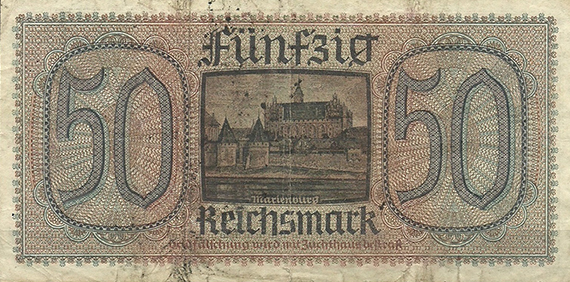
German Occupied Territory
WWII 50 Reichmark (1938)
Authentic 1938-45 Germany 50 Reichsmark Banknote “World War 2 German Occupied Territory Currency ” Banknotes are more than just money. A country’s currency tells a story of the culture and history of a country. The German Reichsmark 1924-48 currency replaced the German Papiermark after a period of hyper inflation during the Great Depression. Germany printed alternate Reichsmarks for their occupied territories until the end of World War 2. The 50 Reichsmark banknote features an authentic Nazi war eagle stamp and seal.



